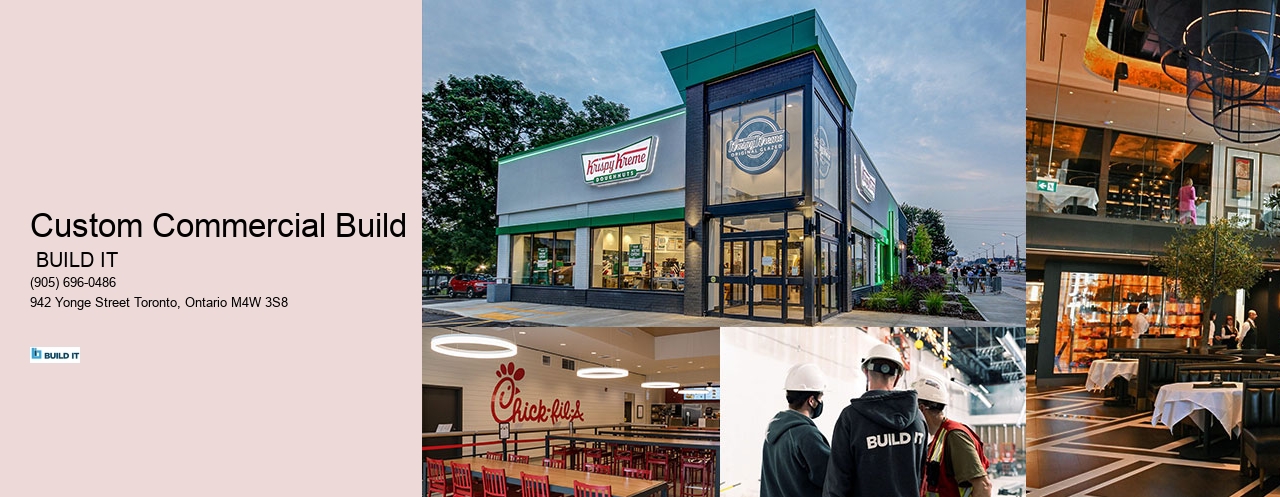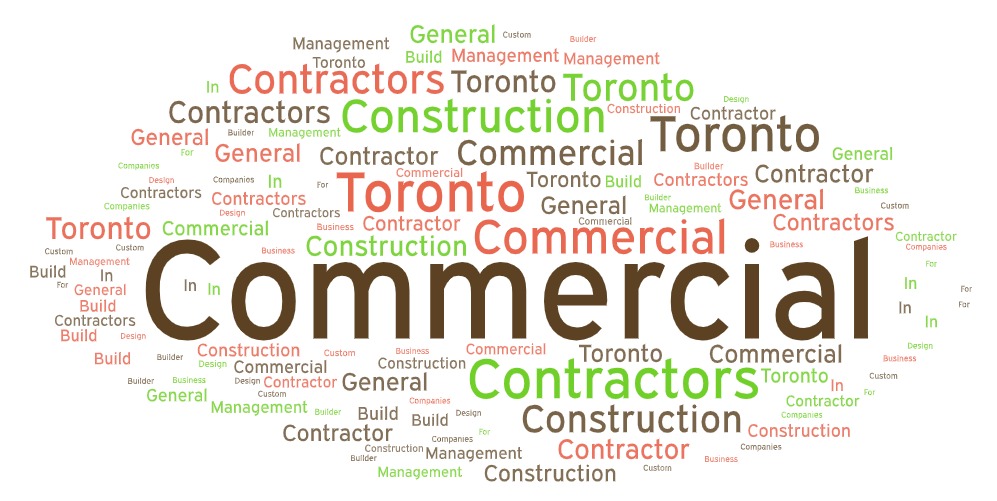

| Commercial Design & Project Management | |
|---|---|
| Commercial Design Build Firms | Single-source solutions for design and construction integration. |
| Commercial Pre-Construction Services | Planning, budgeting, and scheduling services before building begins. |
| Commercial Construction Management | Professional oversight and coordination of commercial projects. |
| Commercial Property Builders | Builders specializing in retail, office, medical, and mixed-use spaces. |
| Custom Commercial Build | Tailored construction services for unique business needs and branding. |
At BUILD IT Toronto, we create commercial and industrial spaces that empower businesses to grow and thrive in Canada’s most energetic city. Our reputation for delivering quality, innovation, and seamless collaboration has earned us the trust of top-tier brands and entrepreneurs who count on us to turn their visions into reality—on schedule, on budget, and with unmatched craftsmanship. From trendy eateries and retail stores on Queen West to modern medical clinics in North York and efficient warehouses in Scarborough, we’ve done it all—and we’re only getting started.
What makes us different? We’re not just contractors—we’re full-scope construction partners. Our team manages every detail, from pre-construction planning and permit approvals to full design-build delivery, construction oversight, and turnkey completion. By housing all services under one roof, we streamline the process and reduce delays, while keeping communication open at every stage.
Our project managers, supervisors, and tradespeople understand Toronto’s unique construction challenges—from zoning bylaws to tight job sites. Whether we’re working downtown, in Vaughan, Mississauga, or Etobicoke, we consistently deliver top-tier results. We specialize in diverse sectors like retail, medical, hospitality, office, industrial, and franchise development.
We take pride in our work and our relationships. At BUILD IT Toronto, we treat clients as partners, not just customers. Our team listens carefully, aligns solutions to your business goals, and uses real-time tools to ensure transparency from start to finish.
In a fast-paced city like Toronto, your space must be as dynamic as your business. That’s why we’re here—to build exceptional spaces that work hard and look great. Let’s build it together.

Green building practices in commercial construction reflect a commitment to environmental sustainability and energy efficiency. These practices are centered around reducing the environmental impact of buildings through thoughtful design, construction, maintenance, and removal. The ultimate goal is to create structures that are well integrated with their surroundings while minimizing resource consumption and improving quality of life for occupants.
One of the foremost aspects of green building is enhancing energy efficiency. This can be achieved through various strategies such as using high-performance windows and insulation, implementing LED lighting, and installing energy-efficient HVAC systems. Additionally, smart building technologies allow for real-time monitoring and optimization of energy use, contributing to significant savings over time.
Commercial contractors are increasingly prioritizing water conservation in their projects by incorporating low-flow fixtures, drought-resistant landscaping, and rainwater harvesting systems. These measures not only reduce the strain on municipal water supplies but also lower utility costs for building owners.
The selection of materials plays a crucial role in green construction. Contractors often opt for recycled content products, rapidly renewable materials like bamboo or cork, and locally sourced goods to diminish transportation-related emissions. Moreover, a focus on durability ensures longer lifespans for components, decreasing the frequency of replacement.
Creating a healthy indoor environment is essential in green buildings. This involves using low-emitting materials that reduce volatile organic compounds (VOCs) along with designing HVAC systems that provide adequate ventilation and air filtration. By doing so, contractors aim to improve occupant comfort and well-being.
The location and development of a site also contribute significantly to its sustainability profile. Commercial contractors work towards safeguarding existing ecosystems while managing stormwater runoff effectively through permeable pavements or green roofs. They may also integrate features like electric vehicle charging stations to support sustainable transportation options.
Lastly, innovation is at the heart of green commercial construction as it drives improvements across all areas mentioned above. Whether it's through exploring new methods for reducing carbon footprints or utilizing cutting-edge technology like building information modeling (BIM) for enhanced project coordination – innovation leads to smarter decisions that pave the way forward for eco-friendly construction practices.
The future of commercial building is inextricably linked with sustainability. As environmental concerns take center stage, design and construction trends are shifting towards materials and practices that reduce carbon footprints and promote energy efficiency. Green roofs, solar panels, and the use of recycled materials are becoming standard features in new commercial projects. Moreover, the push for net-zero buildings—which produce as much energy as they consume—is driving innovation in both architectural design and construction methodologies.
Technology integration stands at the forefront of commercial building evolution. Smart buildings equipped with IoT devices are leading to more efficient management of resources such as electricity and water. From automated lighting systems to advanced HVAC controls, technology enables buildings to adapt to their environments and occupants' needs dynamically. Furthermore, construction processes themselves are being transformed by technologies like Building Information Modeling (BIM), which allows for more precise planning and coordination among different trades.
The way we work is changing, prompting a reevaluation of traditional office space design. Flexibility is key in modern commercial buildings—spaces must be able to accommodate hybrid work models that blend remote working with traditional office environments. Modular designs allow for easy reconfiguration of spaces to suit evolving business needs or tenant turnover, while co-working spaces continue to rise in popularity for their shared amenities and collaborative atmospheres.
The health and well-being of occupants have become paramount considerations in commercial building design. Biophilic design elements that incorporate natural light, vegetation, and open-air spaces contribute to a healthier workplace environment that can improve productivity and reduce sick days. Advanced ventilation systems ensure better air quality while strategies like WELL certification emphasize the importance of creating environments conducive to both physical health and mental well-being.
Climate change poses significant challenges for the future development of commercial real estate. Buildings must be designed with resilience in mind—able to withstand extreme weather events and changes in climate patterns over time. This involves not only robust structural designs but also consideration for location-specific risks such as flooding or earthquakes. Adaptability will be critical as developers seek ways for buildings to remain viable long into an uncertain future.
Lastly, innovation in construction methods is set to play a major role in shaping the future landscape of commercial building. Prefabrication techniques where parts are manufactured off-site lead to faster build times with less waste produced on-site. 3D printing offers another avenue for constructing complex components efficiently while also expanding creative possibilities within architectural design itself.
These trends highlight a contract between past practices reliant on heavy resource consumption without regard for environmental impact or occupant well-being versus a new era where each building aims not just at functionality but also at promoting sustainability, resilience, flexibility, healthfulness—all facilitated by cutting-edge technology.

They schedule, oversee, and ensure each trade aligns with project goals, timelines, and safety standards.
State licensing, bonding, insurance, and experience in commercial codes and safety standards are required.
Offices, retail centers, restaurants, warehouses, healthcare facilities, schools, and more.